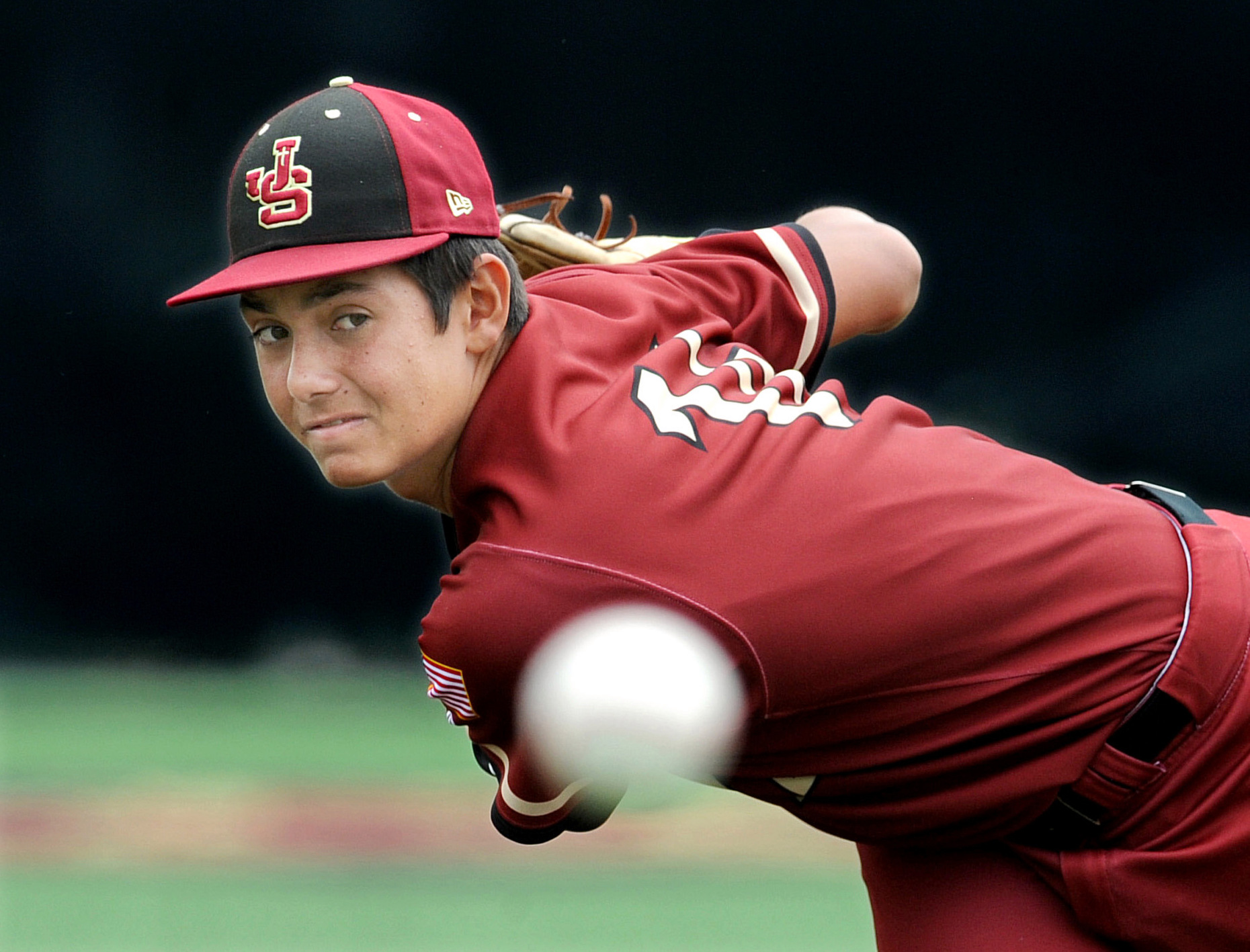The 2021 MLB Draft will begin on July 11, 2021. We take a look at Gage Jump, a left-handed pitcher who may be undersized but still boasts impressive stuff.
Make sure to check out all of our other MLB Draft Profiles.
Gage Jump, Left-Handed Pitcher, JSerra (Calif.)
Height: 5′10″
Weight: 175 lbs.
Age: 18
Bats: Left
Throws: Left
Scouting Grades
Fastball: 55
Slider: 50
Curveball: 55
Changeup: 50
Control: 50
Jump has a promising fastball that he complements nicely with an impressive curveball. His slider and changeup have also shown an ability to be quite effective, too. He throws his breaking balls well and has solid control on all of his pitches.
Strengths
Jump’s curveball is probably his best pitch, which is really important to note because it is his secondary pitch (behind the fastball, of course). The reason why this is valuable is that any pitcher can have a good heater, but it takes a developed and polished pitcher to have an equally dominant secondary pitch. Jump is capable of using his curveball as a top-notch breaking ball that gets delivered from a high arm slot and poses countless challenges for opposing batters.
Jump has a solid fastball, too. This pitch currently checks in around 93 mph but is capable of sitting around 95 mph. It’s likely that he will gain more velocity in the coming years as he fills out his frame, gains strength, and potentially even gains some height. Interestingly, MLB Pipeline notes that some scouts refer to his heater as “dark … because hitters just don’t pick it up.” This is certainly a positive sign and something that can only help his draft stock.
An athletic player, Jump also has good feel for his slider and changeup, both of which he has thrown well. He also has good control on the mound.
Weaknesses
Jump’s size is a glaring weakness. He has been athletic and competitive enough to overcome this so far, but it could mean that his ceiling is limited. This might not be a tremendous concern if Jump were, say, 6-foot and 200 pounds, but at just 5-foot-10 and 170 pounds, size is a significant worry. It will be interesting to see how much this impacts his draft stock and, more specifically, just how much scouts factor a lack of size into his overall profile and assessment.
Command has been another area of concern for Jump. This speaks for itself, but it’s something at least worth pointing out as scouts look for every possible strength and weakness in a player.
Pro Comparison: Kolby Allard
There is plenty in common between Allard and Jump. Both are southpaws, and the former is just three inches and 25 pounds larger. The height is a significant difference, but Jump should be able to approach the 195-pound mark in terms of weight. Allard also throws the same four pitches with similar velocity measurements.
Perhaps the biggest difference here is that Allard throws his curveball 12 percent of the time, which might be on the lower side for what we can expect out of Jump. With that said, if he improves his slider just a bit more, he can afford to bring his curveball down to a low-10s (percent) usage rate.
Draft Projection: Second-Round Pick
Jump is viewed as one of the top prep southpaws, and understandably so. He’s shown that he is capable of throwing and controlling all four pitches in his repertoire, and the fact that he has such a dominant curveball is huge. Still, his size and handedness could both cause concern, and his command will surely have an impact on his draft stock. The bottom line is that some teams may prefer a college arm over a left-handed high schooler who is undersized, which adds another wrench into his draft stock. It’s hard to imagine a team uses their first pick on Jump, but seeing him go off the board in the second round makes plenty of sense.
Check us out on our socials:
Twitter: @PTSTNews and @TalkPrimeTime
Facebook Page: Prime Time Sports Talk
Join our Facebook Group: Prime Time Sports Talk
Instagram: @ptsportstalk
Follow Andersen Pickard on Twitter @AndersenPickard
Main Image Credit: OCRegister.com








One Response